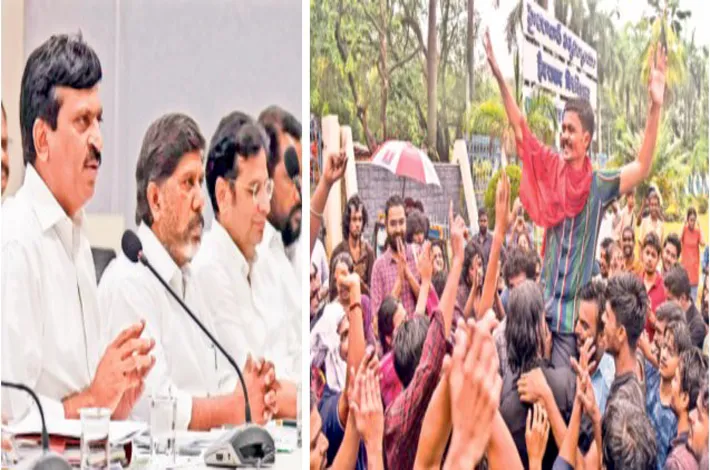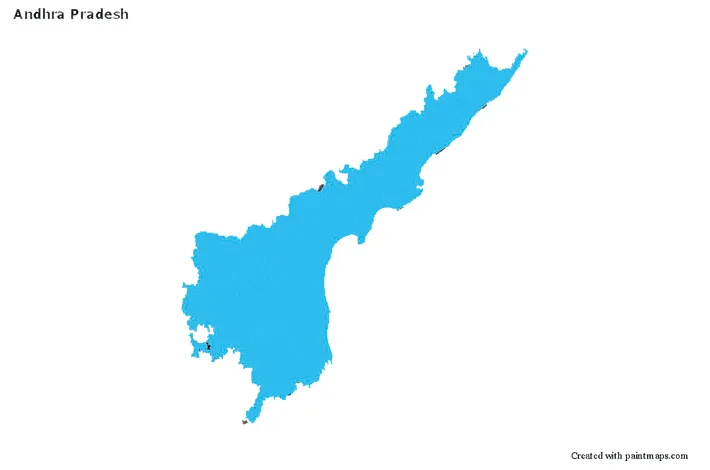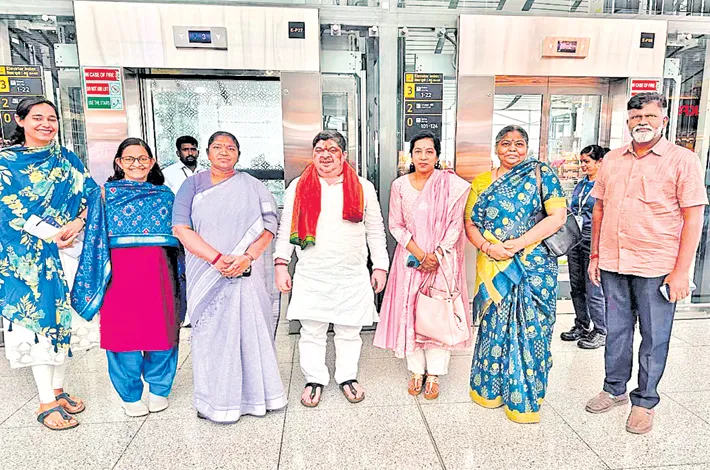Lessons from Hyderabad’s UoH Land Controversy
06-04-2025 12:00:00 AM

In 1978, Dr. M. Channa Reddy, then Chief Minister of Andhra Pradesh, floated a similar plan to shift UoH to Nagarjuna Sagar. The response was swift and fierce: students, faculty, and stakeholders mounted a resistance that forced him to reconsider.
In the vibrant political landscape of Telangana, where ambition often collides with public sentiment, the recent controversy over 400 acres of ecologically sensitive land adjacent to the University of Hyderabad (UoH) has reignited a timeless debate about governance and strategy. At its heart lies a maxim from one of Andhra Pradesh’s most astute political minds, Dr. M. Channa Reddy, who once likened success in politics to the art of kite-flying during Hyderabad’s famed kite festival: Deel Manzha, Keench Manzha—knowing when to pull the string and when to let it soar. This adage, translating roughly to “deal the thread, pull with care,” offers a compelling framework to dissect the unfolding act under Chief Minister Revanth Reddy’s Congress government.
The spark came when the state announced plans to auction 400 acres of land in Kancha Gachibowli, a verdant tract rich with flora and fauna, nestled beside UoH. The proposal triggered an immediate backlash. Students, faculty, environmental activists, civil society members, and opposition parties—including the BJP, BRS, and the Left—rallied against what they saw as a reckless sacrifice of ecological and academic heritage for commercial gain.
The movement swelled beyond Hyderabad, gaining national attention and culminating in a legal showdown at the Supreme Court. A Division Bench intervened, issuing a stay on deforestation activities and delivering sharp rebukes to the state’s approach.
Faced with mounting pressure, the Congress government opted for a tactical retreat. It constituted a broad-based committee—comprising student representatives, stakeholders, three Cabinet Ministers, and others—to seek a resolution through dialogue.
For now, the storm has subsided, but a new rumor has stirred the winds: a suggestion from unnamed quarters that the entire 2300-acre UoH campus be transformed into an eco-park, with the university relocated to a proposed “Future City.” The proposal, accompanied by promises of expansive land and a Rs. 1000 crore fund for a new campus, remains speculative. Yet, its mere mention has raised eyebrows and hackles alike.
For those steeped in UoH’s history, the idea is as audacious as it is untenable. Established in 1974, the university stands as a global academic powerhouse, its reputation forged over 51 years on a campus that began with a generous donation of prime property in Abids by Sarojini Naidu’s family, later expanded to 2300 acres in what was then a remote Gachibowli.
To uproot such an institution—its libraries, laboratories, and legacy—would not only disrupt its academic ecosystem but also provoke a national uproar. The proposal feels less like a visionary leap and more like a misjudged tug on an already taut string.
History offers a cautionary tale. In 1978, Dr. M. Channa Reddy, then Chief Minister of Andhra Pradesh, floated a similar plan to shift UoH to Nagarjuna Sagar. The response was swift and fierce: students, faculty, and stakeholders mounted a resistance that forced him to reconsider. A seasoned politician, Dr. Reddy understood the kite-flying principle he so often espoused. Rather than pull harder and risk snapping the line, he released it gracefully, withdrawing the proposal with minimal damage to his credibility. His retreat was not a sign of weakness but of wisdom—a recognition that political success hinges on reading the winds of public will.
Today’s Congress government would do well to heed that lesson. The Supreme Court’s intervention and the stakeholder committee’s formation suggest Revanth Reddy has already loosened the string to stabilize the situation. Yet, any move to revive the relocation idea risks reversing that progress. UoH is not merely a university; it is a symbol of intellectual heritage, its roots intertwined with Hyderabad’s identity. To displace it for an eco-park—no matter how grand the vision—could alienate students, academics, and environmentalists who see the campus as a living testament to sustainable coexistence.
A more prudent path lies in compromise. Why not allocate 1000 acres in the proposed Future City for a world-class eco-park, leaving UoH’s campus undisturbed? Such a move would balance development with preservation, showcasing the government’s commitment to both ecological innovation and academic excellence. It would also align with Dr. Reddy’s kite-flying ethos: pulling the string to advance a bold project while releasing it to avoid a clash with entrenched interests. The Rs. 1000 crore fund could then bolster UoH’s existing infrastructure, reinforcing its global stature rather than gambling on a costly relocation.
As the stakeholder committee deliberates, its challenge will be to navigate these turbulent winds. The inclusion of diverse voices—students, ministers, and civil society—offers hope for a nuanced solution, but only if the government listens. Pushing forward with an eco-park on UoH’s land could snap the string entirely, plunging the administration into a crisis of legitimacy. Conversely, a measured approach could keep the kite aloft, earning Revanth Reddy the kind of political capital his predecessor wielded so deftly.
In the end, Deel Manjha, Keench Manjha Dr Channa Reddy mastered it by knowing when to yield. Revanth Reddy now faces a similar test. The winds of public sentiment are blowing strong; how he adjusts the string will define this chapter of Telangana’s story.








